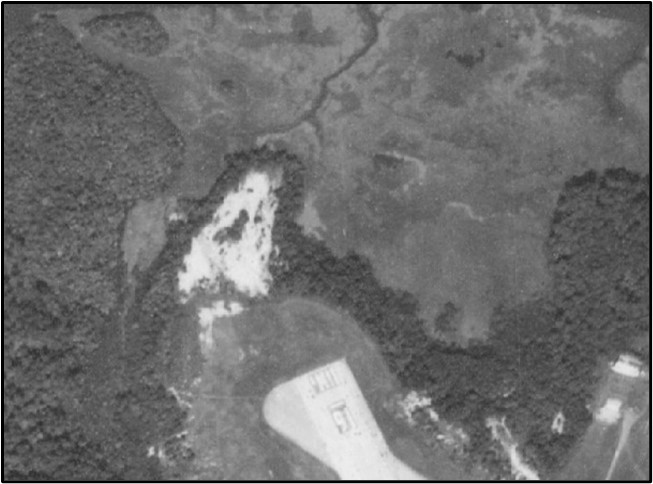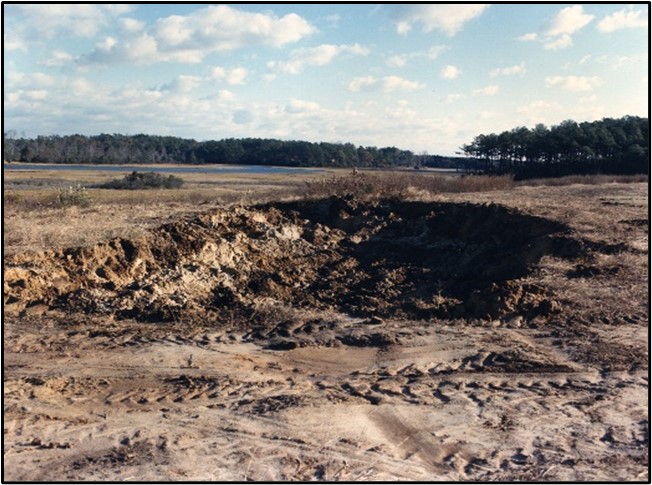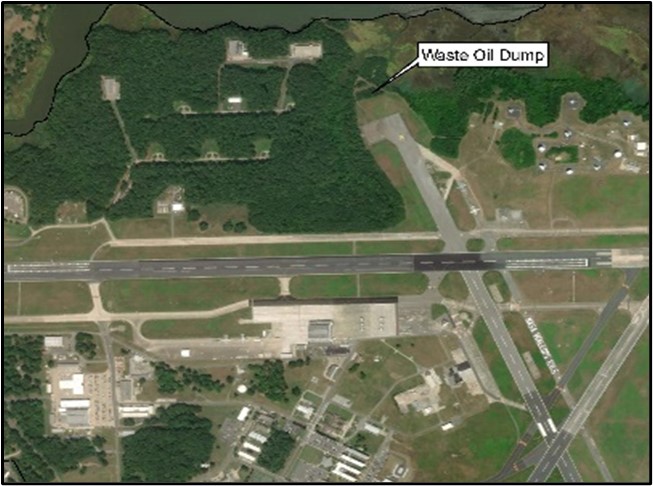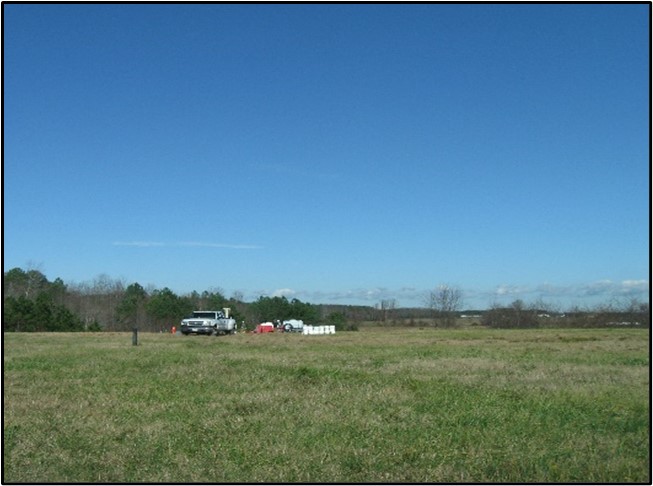Operable Unit 03
Background
Operable Unit 3, the Waste Oil Dump (WOD) site, was used for the disposal of waste oils and flammable liquids by the Navy and NASA. A soil removal action and several environmental investigations have been completed at the site, and groundwater monitoring is ongoing. NASA is currently conducting the third Five-Year Review for the WOD site and Operable Unit 2, the Former Fire Training Area (FFTA) site.
NASA encourages the public to review the technical documents below to gain a more comprehensive understanding of activities that have been conducted at the WOD.
History of the Waste Oil Dump
Historical aerial photo analysis showed the WOD site was created during the construction of the runways and was used by the Navy and NASA for disposal of waste oils and other flammable liquids. Following a removal order from the Commonwealth of Virginia, NASA removed several tons of contaminated soil in 1986.
 |
 |
| WOD Site, 1957 | WOD Site, 1988 |
Waste Oil Dump Site Today
The WOD site is located at the north end of Runway 17-35 and is maintained as an open, vegetated field for an approach way to the runway. Groundwater monitoring wells are dispersed throughout the site.
 WOD Site Location WOD Site Location |
 WOD Site, 2009 WOD Site, 2009 |
Previous Investigations
Site Investigation – In 1990 through 1992, NASA completed site investigation consisting of soil gas surveys, soil, sediment and groundwater sampling and analysis. The investigation concluded there was no evidence that waste remained at the site and no further action was recommended. In 1997, an additional groundwater monitoring well was installed at the site as part of an investigation at a nearby Formerly Used Defense Site, Site 15 (Operable Unit 5). Analytical results showed the presence of solvent and petroleum-related contamination. Below is a summary of the additional environmental activities completed at the WOD site.
Remedial Investigation – In 1998 through 2000, NASA conducted a Remedial Investigation at the site to include a geophysical survey and additional soil and groundwater sampling and analysis. The Remedial Investigation concluded the site presented unacceptable risks to potential human exposure to groundwater due to the presence of solvent and petroleum-related contamination.
Supplemental Remedial Investigation– In 2003 through 2004, NASA completed a Supplemental Remedial Investigation, which quantified the contamination and risks associated with the site.
Feasibility Study – In 2005, NASA completed the Feasibility Study to evaluate potential remedial alternatives to address the site risks.
Proposed Remedial Action Plan – In 2007, NASA completed the Proposed Remedial Action Plan which identified biostimulation as the recommended remedial alternative.
Record of Decision – In March 2008, NASA completed the Record of Decision documenting the selected remedy, which included in-situ biostimulation, institutional controls, and monitoring.
Remedial Action Completion Report – NASA implemented a pilot study to evaluate the effectiveness of in-situ biostimulation at the site in December 2008. The pilot study results indicated a positive reaction in the groundwater and confirmed the planned biostimulation component of the site remedy was appropriate. NASA implemented the full biostimulation remedy in December 2009 with the in-situ injection of oxygen-releasing compounds as described in the Record of Decision. NASA completed the first round of post-injection sampling in March 2010.
Long-Term Monitoring
Since 2010, NASA has completed groundwater long-term monitoring activities at the WOD site. Quarterly monitoring events completed from 2010 to 2014 prompted the removal of benzene from the long-term monitoring program since the performance monitoring goal established in the Record of Decision was achieved. Currently, only arsenic is included in the monitoring program, with sampling occurring twice every five years. NASA completed the most sampling event in September 2022. The next sampling event is scheduled for March 2025.
Long-Term Monitoring Plan – Revision 4 – In 2022, NASA completed the Long-Term Monitoring Plan Revision 4, which outlines the current sampling methodology and protocols. NASA submits a Data Summary Report to USEPA and VDEQ following each sampling event.
Long-Term Monitoring Data Summary Report – In 2022, NASA completed the Long-Term Monitoring Data Summary Report which documented the groundwater monitoring activities and analytical results from June 2021.
Five-Year Reviews
The Administrative Agreement on Consent requires NASA conduct a review of ongoing remedial actions every five years until EPA issues a Certificate of Completion documenting cleanup standards have been met. The third Five-Year Review is now underway and will evaluate all long-term monitoring data, including per- and polyfluoroalkyl substances (PFAS) and other potential new contaminants of concern. The Review is expected to be available to the community by January 2024. Previous Five-Year Reviews include:
First Five-Year Review – NASA completed this Review, which also included the OU 2 FFTA site, in 2014. The review concluded the WOD site remedy was protective and no recommendations for further evaluations were necessary.
Second Five-Year Review – NASA completed this Review in 2019. The Review concluded the site remedy remains protective of human health and the environment.
For any questions regarding Operable Unit 03, or NASA WFFs Restoration Program, please contact:
David Liu
Restoration Program Manager
NASA Wallops Flight Facility
Mailstop: 250.W
Wallops Island, VA 23337
david.liu-1@nasa.gov
(757) 824-2141



